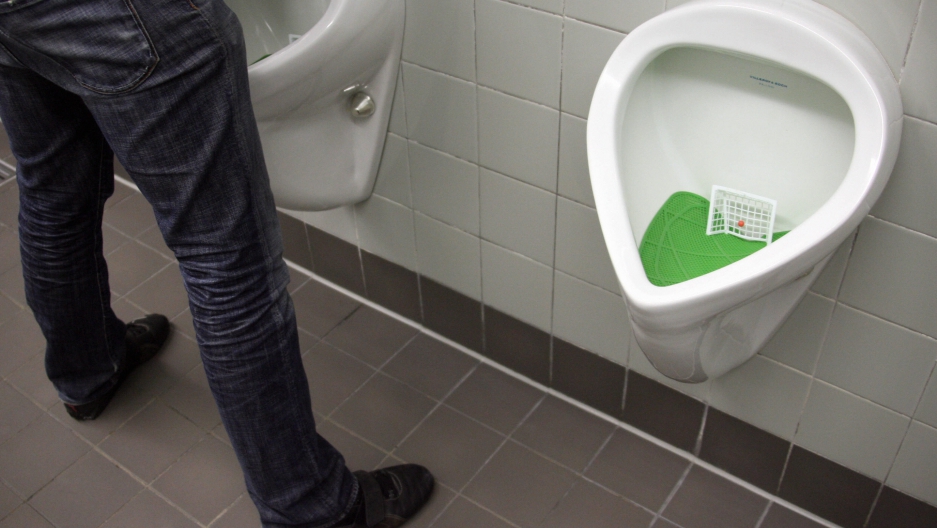
According to the CDC, getting enough water every day is important for your health. Drinking water can prevent dehydration, a condition that can cause unclear thinking, result in mood change, cause your body to overheat, and lead to constipation and kidney stones.
The daily four-to-six cup rule is for generally healthy people. It’s possible to take in too much water if you have certain health conditions, such as thyroid disease or kidney, liver, or heart problems; or if you’re taking medications that make you retain water, such as non-steroidal anti-inflammatory drugs (NSAIDs), opiate pain medications, and some antidepressants.
Water Balance
Water accounts for about one half to two thirds of an average person’s weight. Fat tissue has a lower percentage of water than lean tissue and women tend to have more fat, so the percentage of body weight that is water in the average woman is lower (52 to 55%) than it is in the average man (60%). The percentage of body weight that is water is also lower in older people and in obese people. The percentage of body weight that is water is higher (70%) at birth and in early childhood. A 154-pound (70-kilogram) man has a little over 10.5 gallons (42 liters) of water in his body: 7 gallons (28 liters) inside the cells, 2.5 gallons (about 10.5 liters) in the space around the cells, and slightly less than 1 gallon (3.5 liters, or about 8% of the total amount of water) in the blood.
Water loss from the body occurs predominantly through the renal system. A person produces an average of 1.5 liters (1.6 quarts) of urine per day. Although the volume of urine varies in response to hydration levels, there is a minimum volume of urine production required for proper bodily functions. The kidney excretes 100 to 1200 milliosmoles of solutes per day to rid the body of a variety of excess salts and other water-soluble chemical wastes, most notably creatinine, urea, and uric acid. Failure to produce the minimum volume of urine means that metabolic wastes cannot be effectively removed from the body, a situation that can impair organ function. The minimum level of urine production necessary to maintain normal function is about 0.47 liters (0.5 quarts) per day.
The kidneys also must make adjustments in the event of ingestion of too much fluid. Diuresis, which is the production of urine in excess of normal levels, begins about 30 minutes after drinking a large quantity of fluid. Diuresis reaches a peak after about 1 hour, and normal urine production is reestablished after about 3 hours.
How Long Does It Take To Pee After Drinking Water?
Studies have revealed that the bladder has a direct line of communication with your brain. Your bladder is full of receptors that tell your brain how full your bladder is. Basically, there’s an invisible “fill line” in your bladder. When your urine reaches that point, your brain receives a signal that indicates you need to pee. This happens when your bladder is only a quarter of the way full.
According to healthline, a healthy bladder can hold about 2 cups of urine before it’s considered full. It takes your body 9 to 10 hours to produce 2 cups of urine. That’s about as long as you can wait and still be in the safe zone without the possibility of damaging your organs. However, the amount of time it takes to urinate or pee after drinking water will be different for everyone because several factors including underlying health conditions and weight can determine how fast a person produces urine after drinking water.
| Age | Average bladder size | Time to fill bladder |
| Infant (0–12 months) | 1–2 ounces | 1 hour |
| Toddler (1–3 years) | 3–5 ounces | 2 hours |
| Child (4–12 years) | 7–14 ounces | 2–4 hours |
| Adult | 16–24 ounces | 8–9 hours (2 ounces per hour) |
Generally, adults produce more urine than children, and a child’s urine production generally increases with age. The amount of urine which a person produces can depend on many different factors such as:
- The consumption of certain types of food.
- The amount of liquid consumed.
- The amount of food consumed.
- The amount of fluid lost through breathing and perspiration.
- Medical conditions.
- Certain medications.
Is it safe to hold urine?
While you can sneeze anywhere you want, it’s not so easy when you have to urinate. Holding your urine is sometimes necessary, but if you find yourself doing a dance, it’s time to make a pit stop.
As liquid waste builds up in your body, you get the urge to urinate. It’s not harmful to hold it for a few minutes until you get to the bathroom, but if you wait too long, the effects can be unpleasant and even dangerous.
Holding your urine for too long can weaken the bladder muscles over time. This can lead to problems such as incontinence and not being able to fully empty your bladder.
Holding your urine for extremely long periods of time can also cause urinary tract infections due to bacteria build-up. In addition, it can increase your risk of kidney disease and in rare cases even risk your bladder bursting—a condition that can be deadly.
Below, we look at five potential side effects of holding in pee:
- Pain
People who regularly ignore the urge to pee may feel pain or discomfort in the bladder or kidneys. When a person finally does reach the bathroom, urinating may also hurt.
The muscles may also stay partially clenched after the release of urine, which can lead to pelvic cramps.
- Urinary tract infection
In some cases, holding in pee for too long can cause bacteria to multiply. This may lead to a urinary tract infection (UTI).
Many doctors recommend avoiding holding in pee for extended periods of time, as it can increase the risk of UTIs, especially if a person has a history of frequent UTIs.
People who do not drink enough liquids may be more likely to develop a UTI, because the bladder is not telling the body to pee often enough. This can cause bacteria to spread through the urinary tract, leading to infection.
Symptoms of a UTI can include:
- a burning or stinging feeling during urination
- pain in the pelvis or lower abdomen
- a constant urge to empty the bladder
- strong- or foul-smelling urine
- cloudy, off-colored urine
- consistently dark urine
- bloody urine
- Bladder stretching
In the long term, regularly holding in pee can cause the bladder to stretch. This may make it difficult or impossible for the bladder to contract and release pee normally. If a person has a stretched bladder, extra measures, such as a catheter, may be necessary.
- Damage to pelvic floor muscles
Frequently retaining urine may harm the pelvic floor muscles. One of these muscles is the urethral sphincter, which keeps the urethra closed to prevent urine from leaking out. Damaging this muscle could lead to urinary incontinence.
Doing pelvic floor exercises, such as Kegels, may help strengthen these muscles and repair muscle loss or prevent leakage.
- Kidney stones
Holding in pee may cause kidney stones to form in people with a history of the condition or in those who have a high mineral content in their urine. Pee often contains minerals such as uric acid and calcium oxalate.
You can also read: Why Does It Hurt when I Pee?




